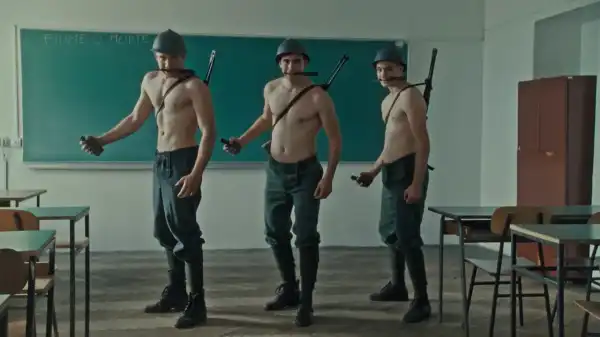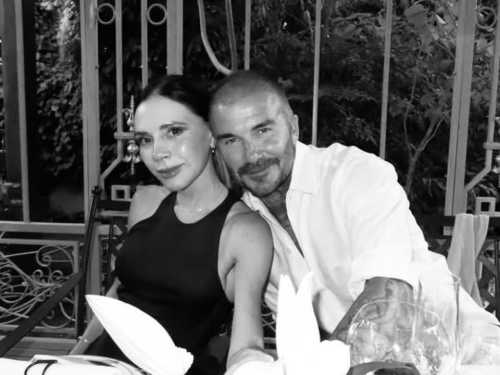
Save this storySave this storySave this storySave this story
Many directors are overconfident in their ability to convey images of life that are far removed from their own experiences. This flippant confidence is especially evident in their interpretations of historical events, where fantasy inevitably veers toward fiction. Croatian director Igor Bezinović takes on this challenge with boldness and skill in his film Fiume o Morte! (Fiume or Death!), which showcases his creative process. He combines elements of documentary prose with fictional interpretations of historical events, revealing the behind-the-scenes aspects of the making of these reconstructions, turning his work into a documentary about the making itself. The film, which will be shown April 4 and 5 as part of the New Directors/New Films series at both MOMA and Film at Lincoln Center, centers on a striking true story that took place in Bezinović’s hometown of Rijeka, and his narration highlights both his personal connection to the saga and the unusual way it is dramatized.
The film examines the turbulent period from 1919 to 1921 when the Italian nationalist poet Gabriele D'Annunzio, in defiance of his government, led a column of rebel soldiers into Rijeka, a city on the Adriatic coast with a large Italian minority and then widely known by its Italian name, Fiume. Quickly establishing control, D'Annunzio became dictator of Fiume. The consequences of his rule were devastating for the city and – because D'Annunzio's actions attracted the admiration of the younger, more ambitious Italian nationalist Benito Mussolini – disastrous for the world. Besinovic presents the story of D'Annunzio's autocratic rise, rule, and fall in a way that is both extraordinary and revealing, assembling a vast array of archival material and a cast of mostly non-professional actors, many of them found through street interviews – to recreate archival images of the occupation.
Besinovich, rather than ignore the details of the process, punctuates them with humorous barbs, directing them in various directions, including himself. The casting interviews begin as informational ones, with him stopping passersby to ask if they know D'Annunzio. Many, especially the young, have no idea. Those who do, mostly older, have few good things to say about him; one calls him “a terrible fascist” and adds, “They're still here today.” Amid these spontaneous discussions of the former dictator, Besinovich approaches middle-aged men, who, like D'Annunzio, are bald, with offers to play him. Besinovich also pays attention to those who speak Fiumanese, then a common but now rare Venetian dialect in the city, not least because he integrates the language into the soundtrack, sharing the narration duties with the participants he films.
Throughout the film, Besinovich casts other amateurs in smaller roles. Young men are recruited to play soldiers; finding the hotel (now private housing) where D'Annunzio spent the night before his capture, Besinovich hires a woman from the house to play the traveler's maid. Some scenes require radical transformations: the storefront that was D'Annunzio's and his friends' favorite tavern is now a nail salon, which, with the owner's consent, the cast and crew transform into a decorative replica of the old haunt. But elsewhere there is seemingly deliberate dissonance, as when the would-be dictator rolls into town in a swanky, modern red sports convertible. In one of the striking episodes, D'Annunzio portrays a professional guitarist who, after performing a decisive battle with an Italian general, himself accompanied it with a piercing musical accompaniment.
One of the key aspects of Bezinovic’s grotesque but sincere re-imaginings is that they do not simply represent events based on archival visual sources. He also copies the compositions, the frames, of the originals, engaging in his own form of directorial reconstruction. It is a tense gesture, since some of the sources he imitates are themselves implicated in the film’s murky history. Many of the archival images were created by D’Annunzio’s so-called Photo Department, which Bezinovic reports took ten thousand photographs; the director wryly notes, “It was important to him that the occupation be remembered, as it is to us making this film.” Bezinovic thus shares the political risks of the project, placing himself in the same ethical position, behind the camera, as the actors portraying D’Annunzio in front of it.
The movement of memory goes both ways – Fiume o Morte! not only evokes memories of the past, but also brings past events into the present, conveying the eerie sensation of watching them happen in real time. Bezinovich’s sense of the city’s history includes the local’s proximity to its places, monuments, traditions. The director explores places that played an important role in
Sourse: newyorker.com






